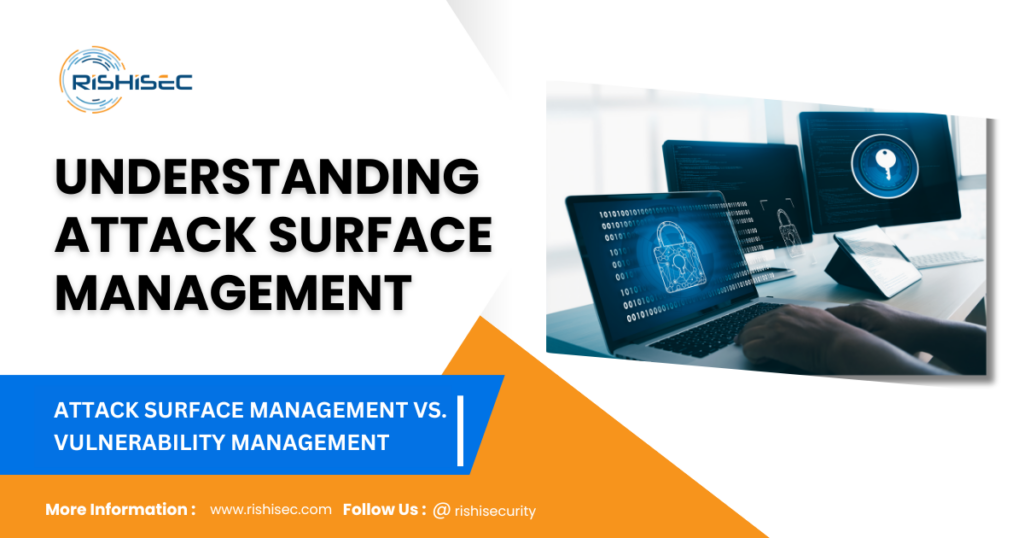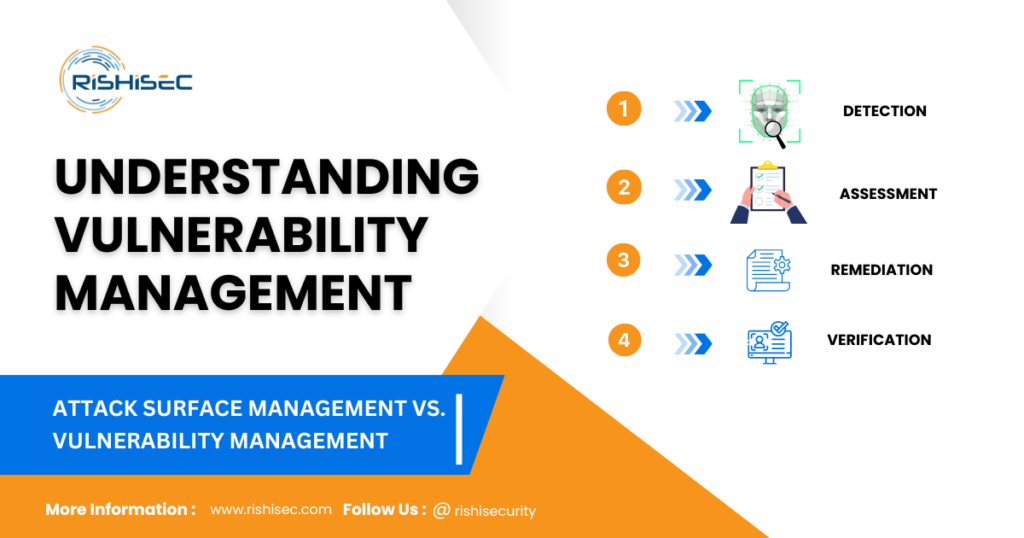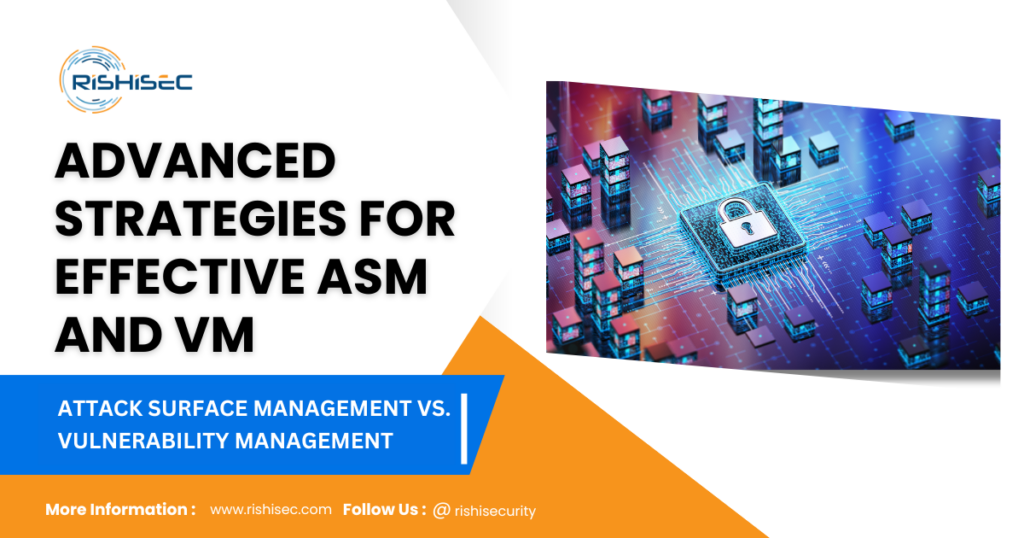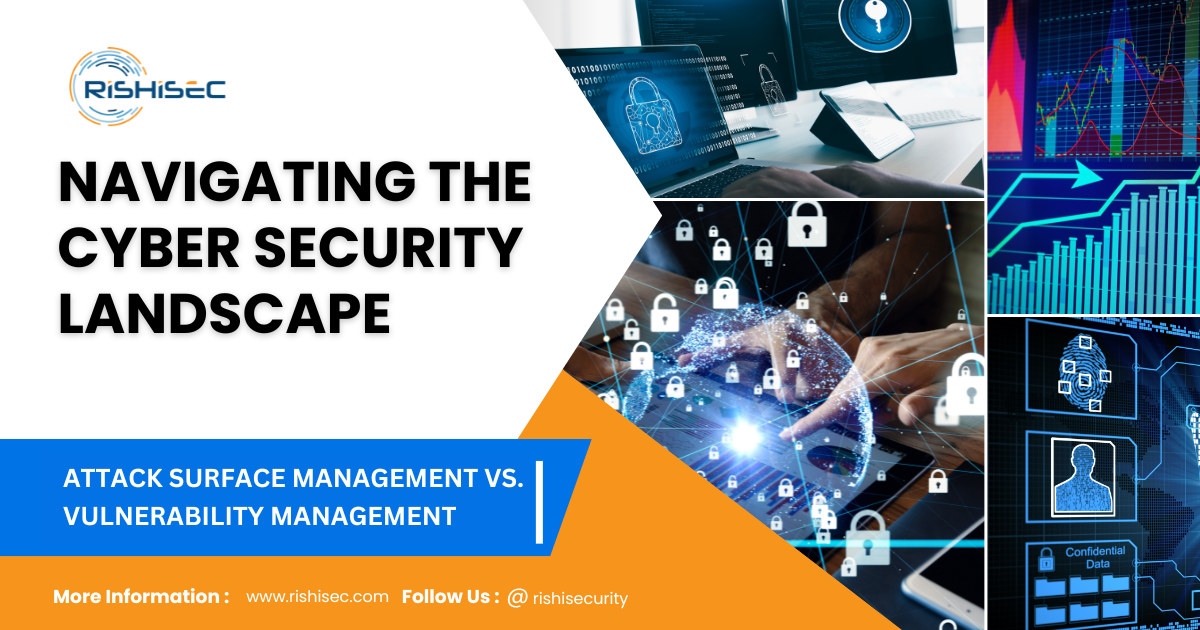Contents
- 1 Navigating the Cyber Security Landscape
- 2 Understanding Attack Surface Management
- 3 Understanding Vulnerability Management in Cyber Security Landscape
- 4 Key Differences Between ASM and VM
- 5 Advanced Strategies for Effective ASM and VM
- 6 Overcoming Common Challenges in Navigating the Cyber Security Landscape
- 7 Case Studies and Real-World Examples
- 8 Conclusion
- 9 CTA
In today’s challenging cyber security environment, organizations must employ effective strategies to defend against evolving threats. Attack Surface Management (ASM) and Vulnerability Management (VM) are two critical approaches while both of these serve different purposes. This comprehensive guide will explore these concepts in depth, providing insights into their roles, differences, and how to leverage both effectively to enhance your security posture. So navigating the Cyber Security Landscape is essential.
Understanding Attack Surface Management

Understanding Attack Surface Management
Attack Surface Management involves identifying, analyzing, and managing the various entry points through which an attacker could compromise your systems. This includes a broad spectrum of potential vulnerabilities across your entire digital ecosystem, including:
- Network Devices: Routers, switches, and firewalls.
- Applications: Web apps, mobile apps, and APIs.
- Cloud Services: Cloud storage, computing resources, and platforms.
- Endpoints: User devices such as laptops, smartphones, and tablets.
ASM is inherently proactive, focusing on the discovery and management of these potential vulnerabilities before they can be exploited. Key practices include:
- Continuous Monitoring: Regularly scan your environment for new or altered attack vectors.
- Automated Discovery: Use advanced tools to automatically detect and catalog potential entry points.
- Risk Assessment: Evaluate the risk associated with each identified attack vector to prioritize mitigation efforts.
Understanding Vulnerability Management in Cyber Security Landscape

Understanding Vulnerability Management
Vulnerability Management, on the other hand, focuses on the life cycle of identified vulnerabilities within your existing systems. This process involves:
- Detection: Regular scans to identify security flaws and vulnerabilities.
- Assessment: Evaluating the severity and potential impact of these vulnerabilities.
- Remediation: Applying patches, updates, or configuration changes to address the vulnerabilities.
- Verification: Re-scanning to ensure that the issues have been effectively resolved.
VM is typically a reactive process, aiming to close security gaps discovered through scans and assessments. Effective VM requires:
- Prioritization: Divide vulnerabilities based on their risk and impact to address the most critical issues first.
- Patch Management: Implement timely updates and patches to fix identified vulnerabilities.
- Compliance Checks: Ensure that your system meets industry standards and regulatory requirements.
Key Differences Between ASM and VM
Scope and Focus: ASM provides a broad view of potential attack vectors, including those not yet exploited or discovered. It aims to preemptively identify risks across your entire attack surface. VM focuses on addressing known vulnerabilities within your existing infrastructure while making it more reactive.
Approach: ASM is proactive, continually assessing and updating your attack surface to stay ahead of potential threats. VM is reactive, addressing vulnerabilities as they are identified through scans and assessments.
Tools and Techniques: ASM employs sophisticated tools for continuous monitoring and discovery. VM relies on vulnerability scanners, threat intelligence feeds, and patch management systems.
Advanced Strategies for Effective ASM and VM

Advanced Strategies for Effective ASM and VM
Automated Scanning and Continuous Monitoring: Deploy advanced automated tools that provide real-time monitoring and vulnerability detection. These tools can handle the complexity and volume of data in offering timely alerts and actionable insights to preemptively address harmful threats.
Integration with Threat Intelligence: Incorporate threat intelligence feeds into your ASM and VM strategies. This integration helps in adapting your security measures based on the latest threat landscape, enhancing your ability to respond to emerging threats.
Regular Training and Updates: Ensure that your cyber security team is well-trained and up-to-date with the latest threats and tools. Regular training sessions and tool updates are essential for effective management of ASM and VM. If you do not take regular training then you may face cyber security issues.
For ASM: Managing a vast attack surface and adapting to rapid technological changes can be daunting. But you can overcome these challenges by leveraging advanced technologies and maintaining a proactive approach.
For VM: Managing a large volume of vulnerabilities and ensuring timely remediation can be complex. Address these challenges by using advanced prioritization techniques and maintaining a structured patch management process.
Case Studies and Real-World Examples
Following case studies are helpful to understand Attack Surface Management vs. Vulnerability
Case Study 1: A global financial institution implemented a comprehensive ASM strategy, integrating automated tools and continuous monitoring. They identified several critical vulnerabilities before they could be treated, significantly reducing their risk profile and preventing potential breaches.
Case Study 2: An e-commerce company utilized advanced VM practices, including regular vulnerability scans and timely patch management. This proactive approach helped them maintain a secure environment, protect customer data, and ensure compliance with industry regulations.
Case Study 3: A tech startup used both ASM and VM strategies to address security concerns across their rapidly evolving infrastructure. By leveraging continuous monitoring and automated vulnerability detection, they enhanced their security posture and mitigated risks associated with new technologies and platforms while navigating the Cyber Security Landscape. So we can easily understand the concept of Attack Surface Management vs. Vulnerability.
Conclusion
To effectively navigate today’s cyber security landscape, organizations must adopt a balanced approach to both Attack Surface Management and Vulnerability Management. Understanding their differences and employing advanced strategies will strengthen your defenses against a wide range of threats. By integrating both practices into your cyber security strategy, you can create a more resilient and secure digital environment.
CTA
Transform your cybersecurity strategy with SentryCA’s advanced ASM and VM solutions. Start your free trial today to explore how our cutting-edge tools can enhance your security posture, streamline your attack surface management, and improve your vulnerability management efforts. Stay ahead of potential threats and safeguard your digital assets with SentryCA because your digital asset is precious.


